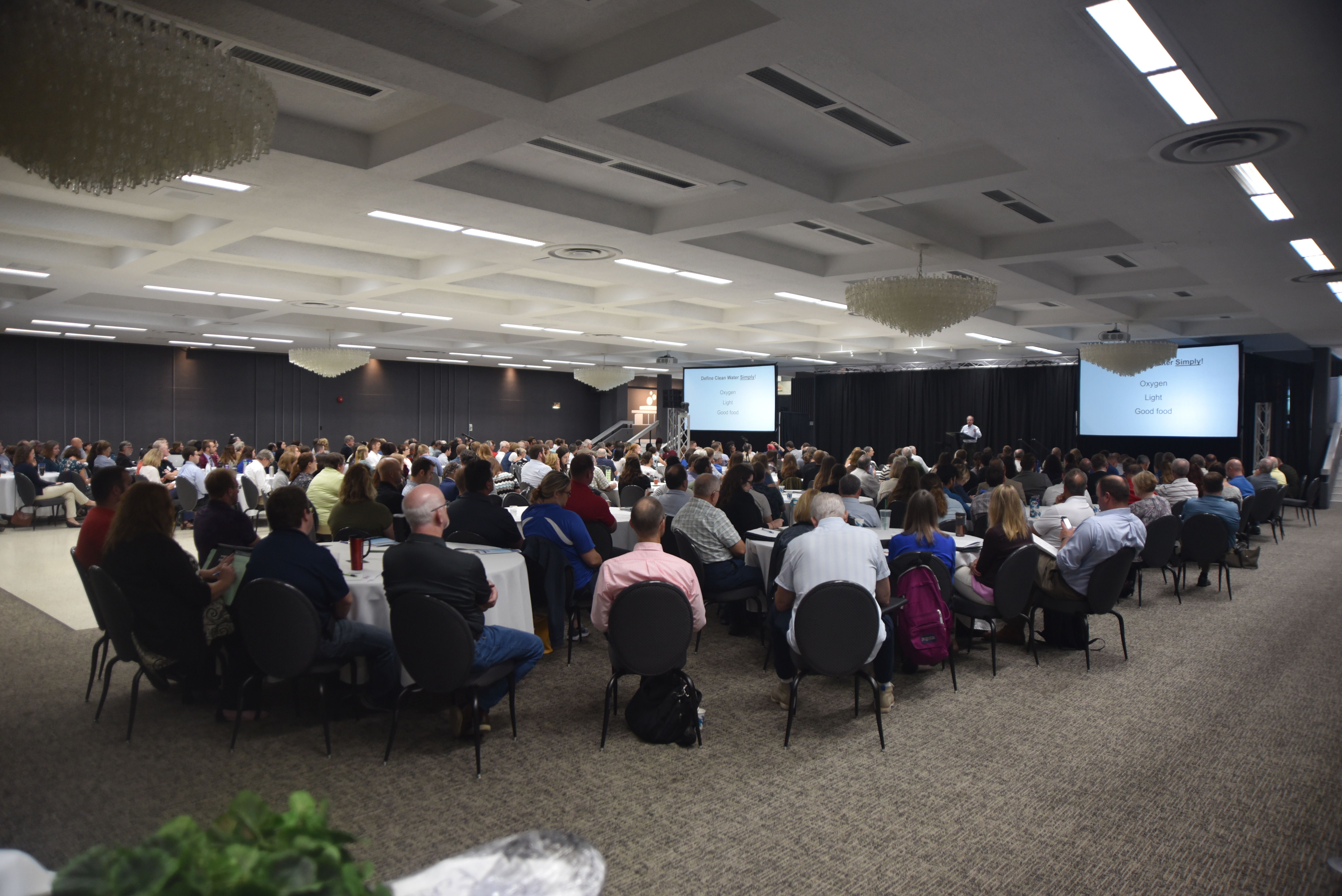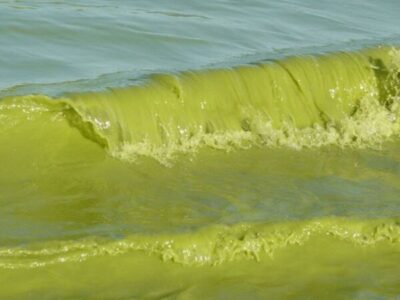
For Lake Erie’s harmful algal bloom problem, cooperation is paramount.
That was one of the main messages shared at the fourth annual “Understanding Algal Blooms: State of the Science” conference in Toledo.
Staff from Ohio Sea Grant, Ohio State University and the U.S. Department of Agriculture pooled resources Sept. 12 to offer a wide-ranging panel of speakers talking agriculture, weather, watersheds and Lake Erie at the conference, held at Stranahan Theater.
More than 300 people were in attendance to learn about the latest news, trends and resources in the battle against annual harmful algal blooms on Lake Erie and some of its tributaries.
Lake Erie turns focus on best management practices and wetlands
Matt Lane, representing the Ohio Department of Agriculture, talked best management practices for farmers.
“Gov. Mike DeWine’s H2Ohio program is a source of funding for projects that we’ve never had before. No-till, water retention, irrigation ponds or wetlands, conservation buffers and aerial cover crop seeding,” he said. “These practices aren’t new, but the amount of money coming from the state to help implement and incentivize these practices is.”
While Lane talked agriculture, Ohio Department of Natural Resources Director Mary Mertz talked marshes.
“We’re going to focus on wetlands,” she said. “And no, we’re not going to bring back the Great Black Swamp, but maybe something like it. Wetlands will be a great assist in reducing phosphorus flowing into Lake Erie.”
Mertz cited 20-plus locations in the Western Basin which the ODNR is looking at for potential wetlands projects, all with an eye toward water quality improvement. One is the Sandusky Bay Initiative, a sweeping project that will place wetlands construction and restoration at nearly a dozen sites from the upper reaches of Sandusky Bay all the way to the lake, downtown Sandusky and the Cedar Point Amusement Park.
The ODA and partners also are searching for about 15,000 acres in the Maumee River watershed for an ambitious pilot project.
“We want to see if we can saturate this area with BMPs and affect the quality of the water leaving this watershed,” Lane explained, going on to say that creating a pilot project of this scale could definitely help model BMPs’ effectiveness for Lake Erie.
The project would utilize virtually every conservation method available and be highly measurable.
“We’re trying to figure out where a good place would work. More details will come out in the future,” he said.
Following Chesapeake Bay’s lead
Richard Batiuk was associate director for science, analysis and implementation at the U.S. Environmental Protection Agency’s Chesapeake Bay Program Office before retiring. In his 28 years working on the bay, he led the integration of science into multi-partner decision-making processes. He’s now a member of CoastWise Partners, an environmental consulting firm.
The similarities between Chesapeake’s issues and Lake Erie’s are strikingly similar, according to Batiuk: a large natural body of water succumbing to human pressures from septic systems, agriculture and combined sewer overflows in urban areas.
According to Batiuk, bringing everyone to the table is paramount. From state and local governments to commercial and agriculture industries to recreational users, Batiuk said anyone with a stake in the Chesapeake Bay was invited, during the past three decades, to help save it.
“We got all six states, farm bureaus, businesses and others to agree on a definition of clean water,” he said. And that was important because it set a clear, simple goal that everyone agreed with in principle, even if they didn’t agree on details about how to get there. For stakeholders in the Chesapeake Bay watershed, clean water meant three things: oxygen, light, good food.
Batiuk said another component of the Chesapeake’s recovery was a constant and thorough regimen of monitoring and data collection.
“It’s not the sexiest thing, but it’s critical. We sent men and women out in the hottest weather and in the worst storms, because that’s when 80 percent of our nutrients loading occurred,” he said. “The main thing is all our decisions were made by the partnership.”
Public accountability for success and failure
To keep the public engaged, he offered up simple solutions.
Instead of telling people progress is being made, or not made, offering up identifiable markers of success or failure is a better way of reporting what’s going on to the general public.
“Everybody knows what an A, B, C or D is,” Batiuk said.
“With report cards, mayors and governors and others are looking at it and saying ‘How did we do?’” he explained. “It’s an easy way of letting people know what’s going on.”
Batiuk offered up a spreadsheet showing various Chesapeake Bay categories and where states ranked in their accomplishments. Looking at it, attendees saw that Pennsylvania lagged behind.
“If you’re Pennsylvania, you already got two black eyes,” he said. “But if you’re West Virginia you can look at this information and say ‘Yes! We’re doing good.’”
Batiuk’s tutorial on creating far-reaching networks to solve water issues offered hope to Lake Erie, whose managers have failed to reach the goal of making progress toward the 20 percent phosphorous reduction by 2020, as required by the Great Lakes Water Quality Agreement, and a 40 percent reduction by 2025.
1 Comment
-
it comes from chemicals




